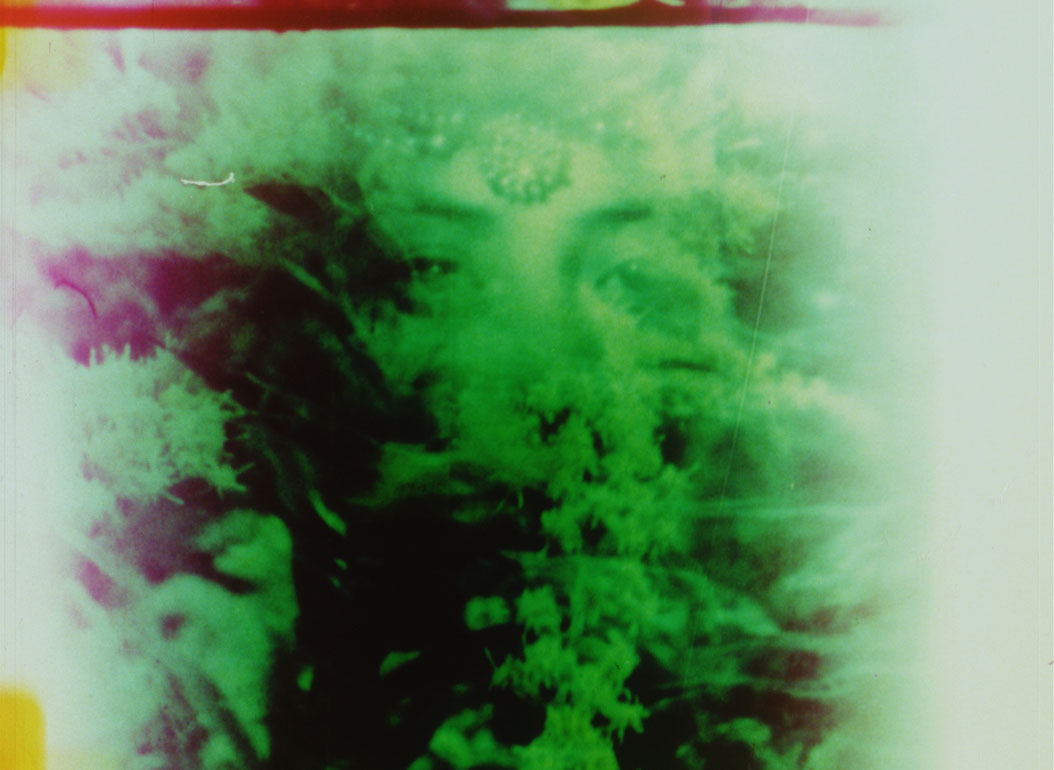Tiniest Dreams
Two that cannot become one. This idea threads its way through Tiniest Dreams conceptually, and it is persuasively conveyed by the formal division of the work into two parts as well. In the first section, which is silent and in color, the camera’s gaze pursues a women (the singer Angel Olsen) as she rushes through a garden. She keeps looking back, as if she is being pursued – thereby embodying an “orphic moment”, which likewise threads through the entire film. The person of Olsen is at once both Orpheus and Eurydice, a figure on screen that divides and multiplies. The source material was shot on 16mm film and processed via an optical printer specifically to effect saturated, pastose colors. Primary colors dominate, signaling a melancholy, even emotive evanescence, created by way of special printing techniques and a selective use of frames.
The second section is entirely different. We see Olsen in fine-grained black and white, singing her song “Tiniest Seed“, time and again accompanying her singing with a dramatic enactment of the inability to become one, as rendered through multiple exposures. She sings, “Where is my harmony” repeatedly, seeming to lament over loss and separation in a quasi-classical vein. The fact that it is she herself who progressively breaks apart (as seen in the filmic image) lends the scenario an additional, counterfactual twist. Toward the end we see the image of Olsen’s back, doubled, tripled, quadrupled – as if Orpheus had not turned around after all as he exited the underworld. Or – and this is the punch line of the tiny dream – as if Eurydice would have disappeared in any case – the view of her back becomes ever more obscure till she finally disappears. And here, at the exact point of separation, something else also gains congruence, namely the double loss seems to converge into an unforeseen togetherness on a higher plane. Two become one after all.
(Christian Höller)
Translation: Eve Heller
Tiniest Dreams
2014
Austria, USA
6 min



